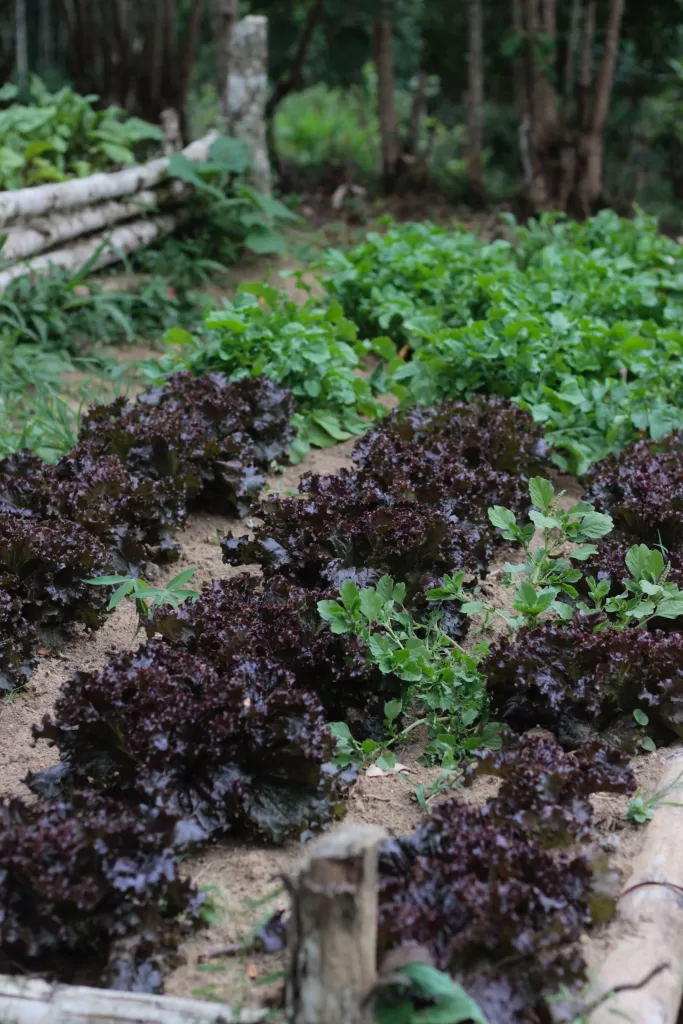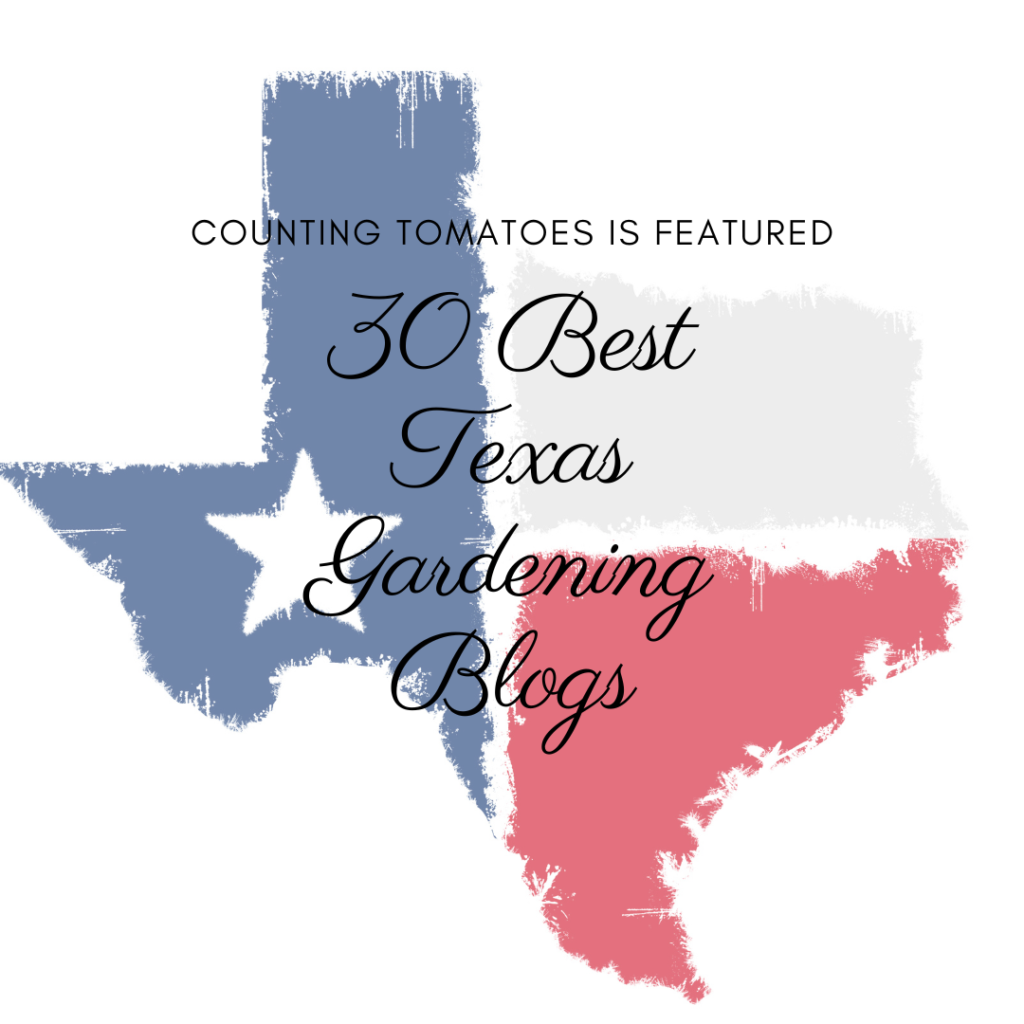Fall is an exciting time of year in Texas and August is an exciting month as cooler temperatures are only a few weeks away. Most Texans have a long growing season before the first fall frost is expected. To find your average frost date, type your zip code into the Farmers Almanac Frost Date finder to see when your first and last frost dates are anticipated. You will use the first frost date to determine when to plant your fall vegetables based on their days to harvest. Don’t worry, I included a general guide by month by Texas region for right time to plant each cool-weather crop.
Table of Contents

August is the first month of a Texas Fall Garden
This month, while still hot, gives Texas gardeners hope as we only have a few weeks until cooler temperatures are in the forecast! Fall crops can be planted in August and it’s time for you to start planning your fall garden!
North Texas
The first week of August you can plant green beans, cucumbers, squash, and corn by direct seeding these in the garden. You can also plant any tomato transplants this month. I prefer to grow indeterminate tomatoes in the fall.
Middle of August start your broccoli, cabbage, cauliflower and brussel sprouts in your seed starting trays. Be sure to keep your seed starting trays moist during the August heat.
Central Texas to South Texas
In the middle of August, plant another round of your spring crops including green beans, cucumbers, squash and corn. Set out tomato transplants; an indeterminate tomato plant variety is a good option for fall.
The last week of August, start seeds to grow broccoli, cabbage, cauliflower and brussels sprouts in seed starting trays. Tips for success include keeping the seed starting trays in the shade and water them multiple times a day to ensure the soil stays moist.
September
North Texas
In north Texas, September is the time to plant leafy vegetables such as lettuce, swiss chard and spinach. I direct sow the spinach seeds, but I have best results by starting my lettuce in seed starting trays. This month monitor your crops for any pests such as squash bugs and cucumber beetles and control those with Neem oil as needed. Continue to make sure your crops are receiving plenty of moisture from natural rainfall or consistent watering from soaker hoses or drip irrigation. Side dress the cucumbers, squash and corn with fertilizer as needed.
Middle to end of September transplant the cool season vegetables such as broccoli, cauliflower and brussel sprouts from the seed starting trays out into the garden. Mid month, direct sow English peas and snow peas.
Also, you may direct sow root vegetables such as carrots, turnips, radishes and beets.
Central to South Texas
Monitor your plants for pests and treat with Neem oil as needed.
Late September you will transplant broccoli, cauliflower and brussels out into the garden. The last week, south Texas gardeners can direct seed English peas and snow peas.
October
Central to South Texas
Planting time has arrived for leafy vegetables such as lettuce, kale and spinach. Check your local garden centers for lettuce transplants or start your own seeds in seed starting trays.
Also, you may direct sow root vegetables such as turnips, carrots, radishes and beets.
What vegetables can you plant in your Texas fall garden?
Leafy Greens
Lettuce and kale are an easy crop to grow in cooler weather and easy to grow for beginner gardeners. Transplants are much easier to grow than direct sowing lettuce and kale seeds in the garden. Plant transplants 4 to 6 inches apart. Lettuce, kale and spinach need to be covered if a hard freeze is expected, but these plants can tolerate a light frost. I recommend this row cover.
Plant your leafy greens in an area that receives at least 8 hours of direct sunlight daily. All leafy greens can grow with as little as 5 – 6 hours of sunlight, but they will not grow as fast.
Two weeks after transplanting or when the plants are at least 4″ tall, side dress each 35 feet of row with 1/2 cup of nitrogen rich fertilizer worked into the soil and watered well. Keep the fertilizer away from the leaves to prevent leaf burn. Repeat the fertilizer program every three weeks until harvest. You may harvest a few leafy greens from each plant for continuous harvest until a hard freeze.

Broccoli and Cauliflower
Broccoli and cauliflower are generally planted as transplants and should be spaced approximately 15″ apart. Green Magic broccoli and Twister cauliflower are two favorite varieties to try. Plant these vegetables in soil rich in organic matter with good drainage. Water and fertilizer are key to growing nice size heads of broccoli and cauliflower and getting a bountiful harvest. Do not let these plants dry out.
Fertilize broccoli with 1/2 cup of nitrogen rich fertilizer per 35 feet of row 2 weeks after transplant and again using 1 cup after heads start to form. After harvesting the main head of broccoli, repeat the fertilizer regime to grow numerous side shoots for additional harvest
Fertilize cauliflower with 1 cup of nitrogen rich fertilizer per 35 feet of row length 4 – 6 weeks after transplant. When a small of head of cauliflower begins to form pull up the larger leaves over the head of the cauliflower and tie with a rubber band to prevent the head from yellowing. If you plant the Twister variety of cauliflower the leaves will naturally gather and twist over the head of cauliflower doing this step for you! Brassicas can tolerate a light frost, but cover the plants when extreme cold weather and a hard frost is expected.
Caterpillars are the main pests of these brassicas plants and your best defense is to start spraying organic BT on the plants and under the leaves at the first sign of damage.

Root Crops
The colder temperatures in fall and winter help sweeten the taste of root crops such as carrots and turnips. Direct sow the seeds in well-drained sandy and loamy soill. Prepare a raised bed or row that is ideally 6″ – 12″ high with loose soil. Incorporate 2 pounds of complete organic fertilizer into the soil before sowing the seeds. Keep the soil moist until the seeds sprout.
After the seeds have sprouted, reduce the frequency of watering to allow the soil to slightly dry out between waterings. You do not want your root vegetables to receive too much water and rot underground. Once the seedlings are around 6″ tall, side dress the row with 3/4 cup of fertilizer per 35 feet of row length.
For more varieties check out my list of 13 Vegetables to Grow in a Texas Fall Garden.
Hot summers can really put a damper on the gardener’s spirit but fall is a great time to get back outdoors and start growing again. Even though it is still hot, August is the best time to start planning for a successful fall garden. Texas after all, is one of the best places to garden due to our long growing seasons.


